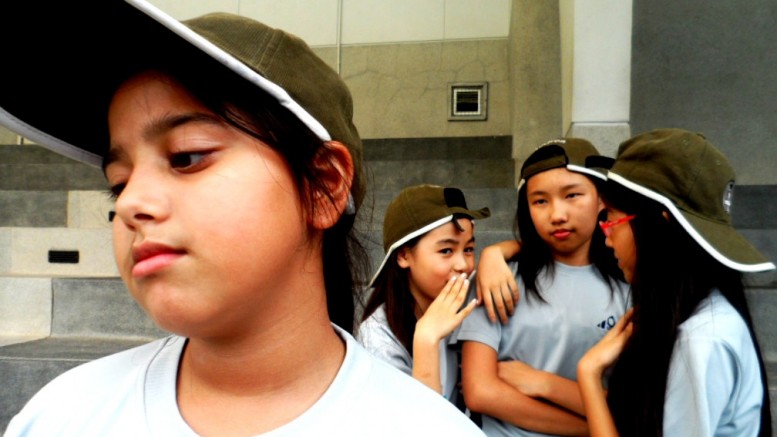A person’s ability to speak clearly is one of the powerful and important aspects in order to communicate effectively. So, when we find it hard to enunciate a certain word or a certain letter, we ought to feel insecure because of the inability to correctly pronounce a specific word.
This type of inability to enunciate certain sounds is called lisping. A person who is suffering from lisp is suffering from the inability to form the /s/ and /z/ and instead replaces these with sound /th/; Some also have problems in enunciating the sound for /r/, /ch/, /j/ and /ge/ among others.
If you are suffering from this problem, you should not feel so bad because this article will give you helpful tips on how to get rid of a lisp. This is so that you will no longer have to avoid talking to people, and you will no longer have to avoid saying out words that have letters where you cannot pronounce properly.
This condition mostly affects children. While there are some who outgrow the condition, however, there are somewhere the condition persists to adulthood. This is why it is essential that you should be able to know how to get rid of a lisp early on in order to correct the condition and prevent it to persist to the child’s adulthood.
How to Get Rid of a Lisp – Its Causes
In order to produce a sound, you will have to alter the way you place your lips ad your tongue in relation to each or in relation to your teeth and your jaw.
It is not really clear when it comes to the leading cause of a lisp, however, here are some several factors that contribute to a person’s lisping:
Tongue Thrust
This type of condition occurs when the muscles of the tongue are not well-balanced. This is common in children and if left unattended it might persist into adulthood. The tongue thrust happens because of the constant use of pacifiers or because of thumb sucking.
Tongue-tie
This is a type of birth defect which causes the impairment of the mobility of the tongue. When the tongue is unable to move during the formation of a specific sound then a lisp is developed.
Upper respiratory illnesses
This type of condition happens when children suffer from respiratory diseases wherein they are forced to breathe through the mouth which then affects their healthy speech development.
How to Get Rid of a Lisp – Lisp Types
Lisps are being categorized into four with each of which is intended for a different pronunciation inability.
Inter-dental lisp
This is also known as the frontal lisp. The inter-dental lisp is a person’s inability to pronounce the sounds of /s/ and /z/, instead, they pronounce /s/ and /z/ as /th/. If a child has this type of lisp the word “soup” will be pronounced as “thoup” and “lisp” is going to be pronounced as “lithp”.

Frontal lisp
This is a condition that is common among children ages 4 to 5 but they will still soon outgrow it. This condition usually occurs when the tongue is pushed forward between front teeth thereby pushing air forward with it.
Dentalized lisp
This is a lisp that is almost the same as frontal lisp wherein the air is being pushed forward. The tongue after having to push air forward will rest on the front teeth when sounds that are produced by hissing are articulated.
Here, the sound is now mostly muted, and some of the sound is not going to come out clearly.
Recommended Solutions
Get Therapy for Frontal or Interdental Lisp
The frontal list is the result of a child replacing the sound /s/ and /z/ with the sound of /th/. This lisp is being treated first with an assessment. The child will be given a list of words with sibilants for them to read. The words to be given should have the /s/ and /z/ sounds that are being placed in different positions. There should also be a blend of words and you should note down words that your child is capable to read correctly and those which they lisp. Obviously, being able to hire someone that specializes in speech therapy would be the most beneficial action as they can really nail down these strategies.
Then, try to identify the sounds that the child is capable to pronounce correctly among those that are on your list. So if there are words that the child can pronounce correctly, let them pronounce the words and then feel the position of the child’s tongue. So your child should be able to describe how the tongue is sitting at the back of the mouth and what the position of the tongue tip is, whether the tip is up or down.
There are also some children who are able to pronounce sibilants with the tongue tip up behind the upper front teeth and there are also some who can pronounce them with the tip down behind the lower front of the teeth.
Whichever words that the child is going to say, you should see to it that the child is able to say them clearly without any sign of lisp. This is the reason why you should be able to give the child as many words with sibilants as possible on different positions of the words. And then, when the child is starting to lisp on a word, you should drop the word and then choose another one.
You will need to practice the /s/ and the /z/ sounds in the words up until the child can be able to feel exactly where his or her tongue lies in the mouth. This is where the importance of a speech therapist comes in when it comes to handling the treatment.
Use the Elicitation Technique
If the child is incapable of pronouncing any of the words that you present to him or her without lisping, then you can try to teach them with how they can pronounce these words with any of the following methods:
Use the exploding /t/
This type of technique is by making the sound of /t/ in the same place in the mouth as the sound of /s/. And when the child is cable of pronouncing the sound /t/, it will eventually be easier for the child to learn the sound of /s/.
So you can start by letting the child say /t/ many times and then explode when the child is already forming the last /t/ sound, so this will come out to something like ‘t,t,t,t,tsssss’.
Let the child repeat this for a lot of times and them stop them sometimes when in the middle of doing it so that they can be able to practice the sound /s/ to sound like ‘t,t,t,t,tsss….ssss’.

Use of co-articulation
With this method, you will have to need to choose a sound that is being produced in the same place as /s/ sound then put them from end to end.
Form the /z/ sound
When the child is already able to produce the /s/ sound, let the child practice humming in order to turn on their voice when they are producing the /z/ sound.
While the child hums, the child can then place his or her hand on their throat for them to feel the hum.
Practice with Single Words
After being able to identify the natural position of the tongue when it is producing sibilants, you will need to start practicing. The practice is going to start with single words with sibilants in different positions.
In practice, start with the words that the child is able to clearly pronounce and then with words that relate to them. So if the child is capable to pronounce the word ‘gets’, let the child practice related words such as ‘bets’ and ‘lets’
After having mastered these words, introduce such words that are almost similar to them like ‘best’, ‘lest’ and ‘gest’ among other words. So better make sure that the child has already mastered /s/ sound on one position of a word before taking on to another position.
Practice Until Mastery is Reached
By being able to form single words, start to practice different sounds on sentences and then engage the child in a conversation. You should take as much time as possible to your days when practicing the different sounds and then be able to identify the natural position of the tongue every single time.
Opt for the Latera Lisp Speech Therapy
When the child has a lateral lisp, this is not going to be easy to treat. This is because lateral lisp is a condition wherein the air is being forced out form the corners of the mouth instead of forming the front for sounds such as /s/, /z/, and /sh/.
The first thing that most of the therapist is going to do is to identify words that cause lisping. Some of the sounds a therapist might discover to include /s/, /z/, /sh/, /ge/, /ch/ and /j/.
After being able to identify the challenging sounds, your next step is to create a list of words with these sounds, and after having tried a lot of words, you might then realize that there are some words that the child can already comfortable and clearly pronounce.
